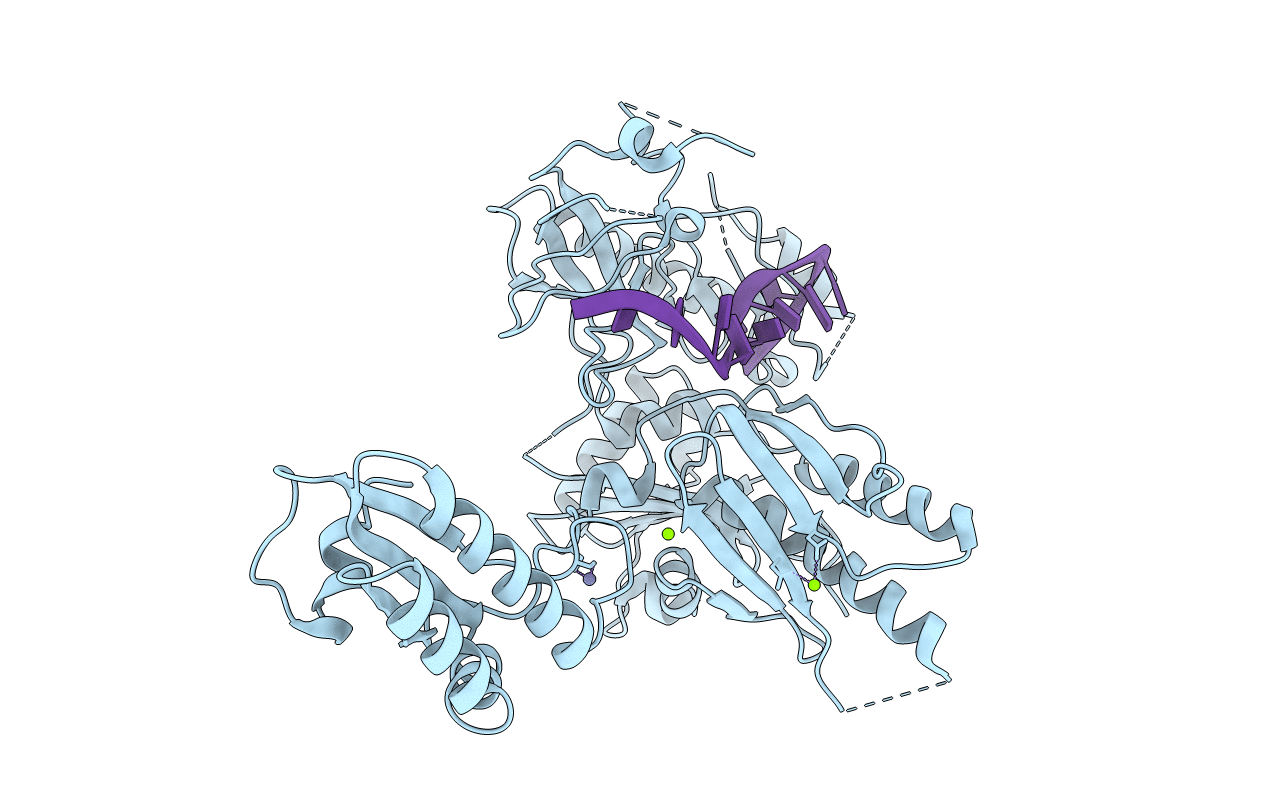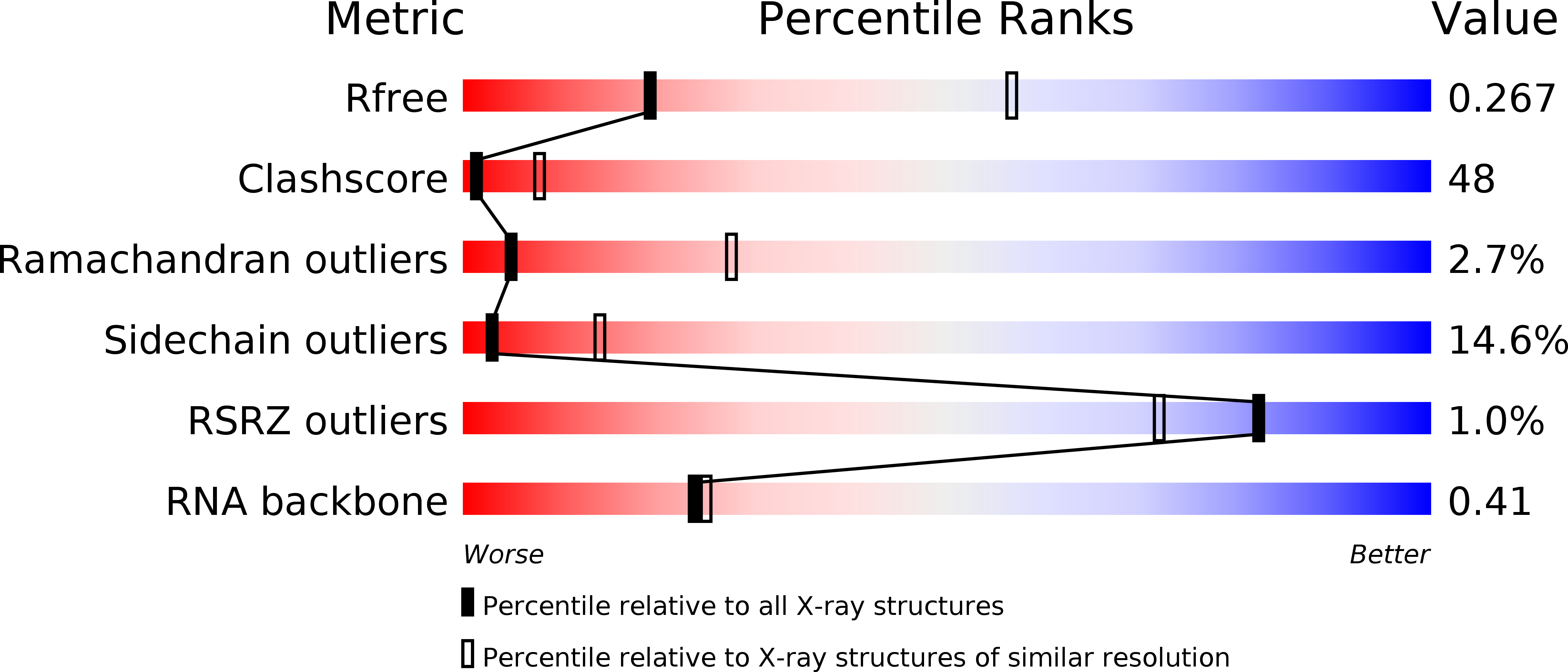
Deposition Date
2005-08-30
Release Date
2005-10-14
Last Version Date
2023-12-13
Entry Detail
PDB ID:
2C0B
Keywords:
Title:
Catalytic domain of E. coli RNase E in complex with 13-mer RNA
Biological Source:
Source Organism:
ESCHERICHIA COLI (Taxon ID: 562)
SYNTHETIC CONSTRUCT (Taxon ID: 32630)
SYNTHETIC CONSTRUCT (Taxon ID: 32630)
Host Organism:
Method Details:
Experimental Method:
Resolution:
3.18 Å
R-Value Free:
0.28
R-Value Work:
0.25
R-Value Observed:
0.25
Space Group:
P 62 2 2


